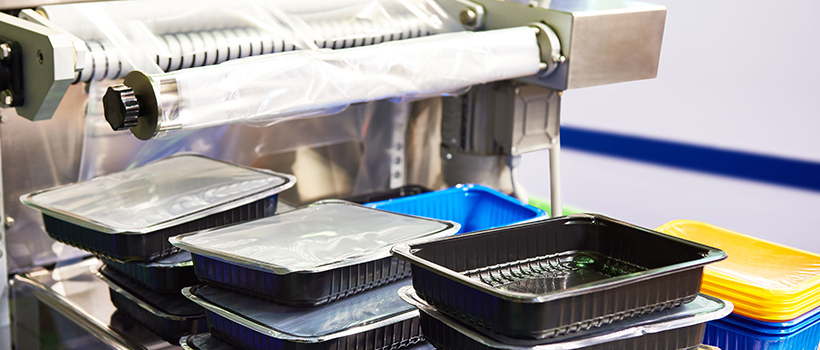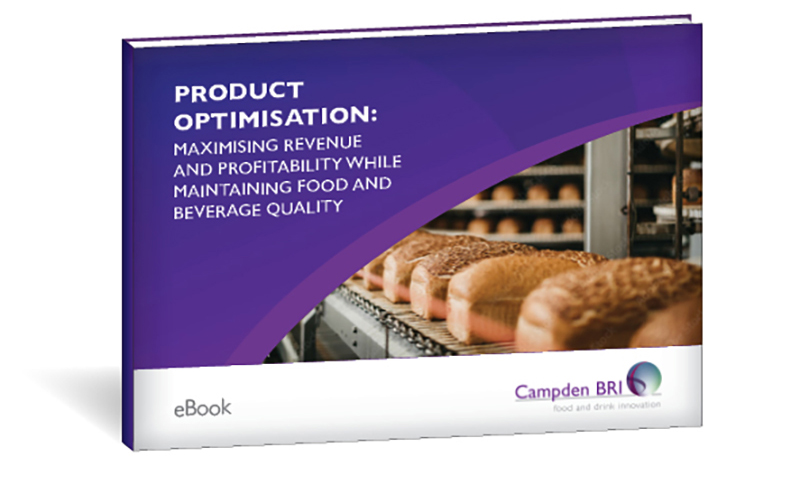
5 ways to optimise the packaging of your food and drink products
15 February 2023 | Lynneric Potter, Food Packaging Technical Lead
Packaging optimisation can be an influential product optimisation strategy for cost reduction and unlocking elusive value and potential from your products.
Whether it is to adapt in the growing and changing market, utilise advances in technology, meet sustainability aims or stay ahead of competitors, there are many reasons for food and drink business operators to optimise their packaging.

There are several ways of approaching packaging optimisation, including strategies that cost optimise (reducing packaging costs) or value optimise (using packaging to increase your product’s popularity with consumers) the packaging itself, as well as strategies that use packaging to influence improvements to the overall product and its production process.
Here we explore five of the many ways that packaging can be optimised to maximise the profitability of food and drink products.
1. Reducing usage and improving sustainability
Reducing the amount required of each packaging material can decrease packaging-related costs as well as help to meet your business’s sustainability aims.
Innovative materials, mono materials and coated paper and films can all be used to either reduce overall packaging usage or act as a more sustainable alternative. For example, a number of businesses are moving from multilayer films to mono films to improve recyclability.
For tray and film sealed plastic packaging for example, reducing the seal area can be a means through which to reduce the amount of packaging that is needed.
Reducing packaging size can also be an effective means of reducing the amount of packaging used for your product. Larger packs can create a perception of more product, which can lead to consumer disappointment upon opening. Reducing the pack size (with the same amount of product inside) can overcome this as well as naturally reduce the headspace in the pack – depending on the product / packaging format, this can reduce the amount of air in the pack (improving shelf-life) and reduce product damage (less movement inside the pack).
2. Packaging portfolio rationalisation – eliminating packaging materials or replacing them with cheaper alternatives
So, you have minimised the amount of each packaging material that you will use, but are there any packaging elements that could be eliminated entirely? Without proper, regular evaluation, packaging material portfolios can balloon. The additional stock-keeping units can significantly add to your portfolio costs by complicating supply chains and manufacturing.
Removing packaging elements and rationalising / minimising your portfolio of packaging materials enables you to simplify your operation and leverage purchasing scale. To identify opportunities, evaluate why each piece of packaging is used – its purpose and value – as well as its cost. What will be the impact of removing or replacing it?
For the essential packaging elements, alternative materials can be considered in order to find cheaper alternatives for delivering the same function. Sourcing more affordable packaging materials can reduce costs, make product manufacture more economically viable without negating quality, and maximise the profitability of your products.
Additionally, investigating alternative suppliers for your packaging materials can further support cost reduction.
3. Supply chain mitigation
Are you tied down to one supplier? Could you have several suppliers?
Another powerful strategy in the packaging / cost optimisation arsenal is supply chain mitigation. With global product availability constantly fluctuating and at the mercy of external factors, companies can be left struggling to source materials and incurring high, unexpected costs.
Building supply chain resilience is therefore key. In practice, that means having a back-up plan for swift substitution should supply chains be threatened for your packaging materials.
4. Value Optimisation
Optimising packaging can be used to increase a product’s value. Value Optimisation involves identifying what consumers enjoy about a given product and utilising these strengths to sell more of it.
Selecting the right packaging materials can add value to a product by upholding quality and improving shelf-life. And, when designed effectively, packaging can grab consumers’ attention and drive purchasing.
If the packaging elements of your product don’t currently meet the consumer values identified, this could be an opportunity to improve your product and grow your market. What’s more, by learning what consumers do not like, you can avoid pitfalls that may decrease sales. If the packaging has non-value-added features, removing it from the product may be the most effective way to drive down costs while still protecting product quality.
5. Reduce product waste
Optimising packaging may not mean directly reducing packaging costs, or using packaging changes to increase your product’s popularity with consumers. Instead, packaging may be better optimised to meet an aim that is superior in relation to your business’s aims.
Using optimal packaging materials can protect and improve a product’s shelf-life, thereby minimising food waste (through expired life), and protecting product safety and quality (preventing write-offs). Sub-optimal packaging can result in damaged or poor quality product, which can be costly in terms of the food waste / sustainability impact, retailer / consumer compensation costs and product / brand reputation.
Minimising and reducing waste is a key focus for all food and drink business operators – while packaging usage and packaging waste are critical issues, they must be considered alongside the issue of the overall waste associated with a product. As such, effective packaging optimisation projects can aim to reduce food product waste.
Risk and reward – striking the right balance
With pressure still high for food and drink manufacturers to reduce packaging and improve sustainability of the packaging they do use, this is inevitably in careful balance with the functions that the packaging needs to deliver. Any changes need to be thought through carefully, and the impact on product quality assessed.
When looking to optimise your packaging, consider the impact of any change on the packaging function and integrity, storage requirements, supply chain, stability / robustness, ease of use and handling, shelf-life (of packaging and product), cost and consumer perception.
Optimise now for a more profitable future
The food and drink industry is constantly changing, with a host of exciting opportunities available to manufacturers and suppliers to tap into and maximise product revenue. But alongside this promise are significant barriers to profitability that threaten to crop up at any time.
Performing regular product optimisation is the key to protecting and boosting your revenue, and optimising your packaging is a great place to start. An external partner with the appropriate expertise can provide an independent view of your processes, add value and help streamline all the steps involved.

About Lynneric Potter
Lynneric has worked at Campden BRI since 1999, and has spent the majority of this time specialising in all things packaging, including supporting members and clients, managing contract projects, and conducting research.
How can we help you?
If you’d like to find out more about packaging materials, contact our support team to find out how we can help.
Download our FREE eBook today
To explore the different strategies that you can undertake to maximise your product revenue and profitability without compromising quality, download our eBook today.







